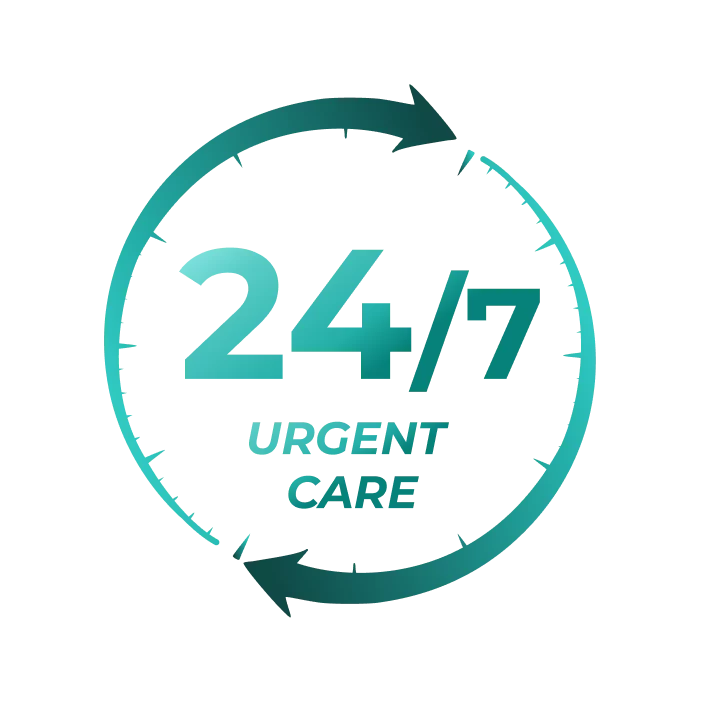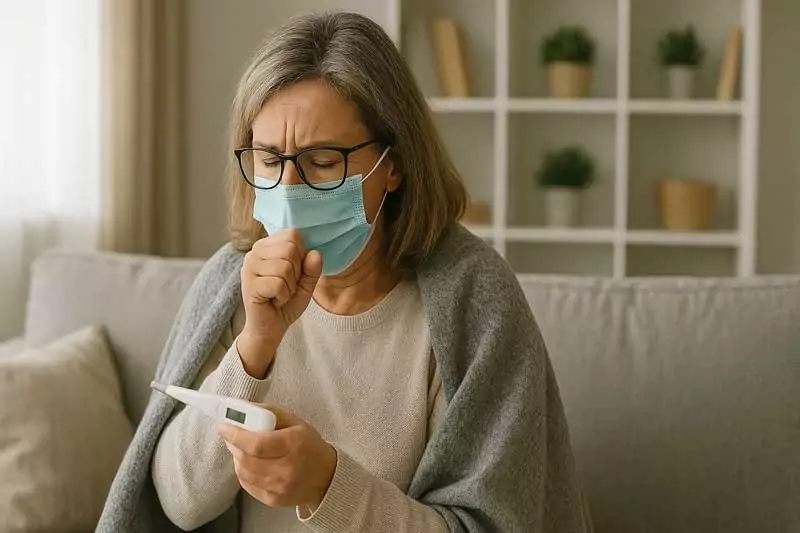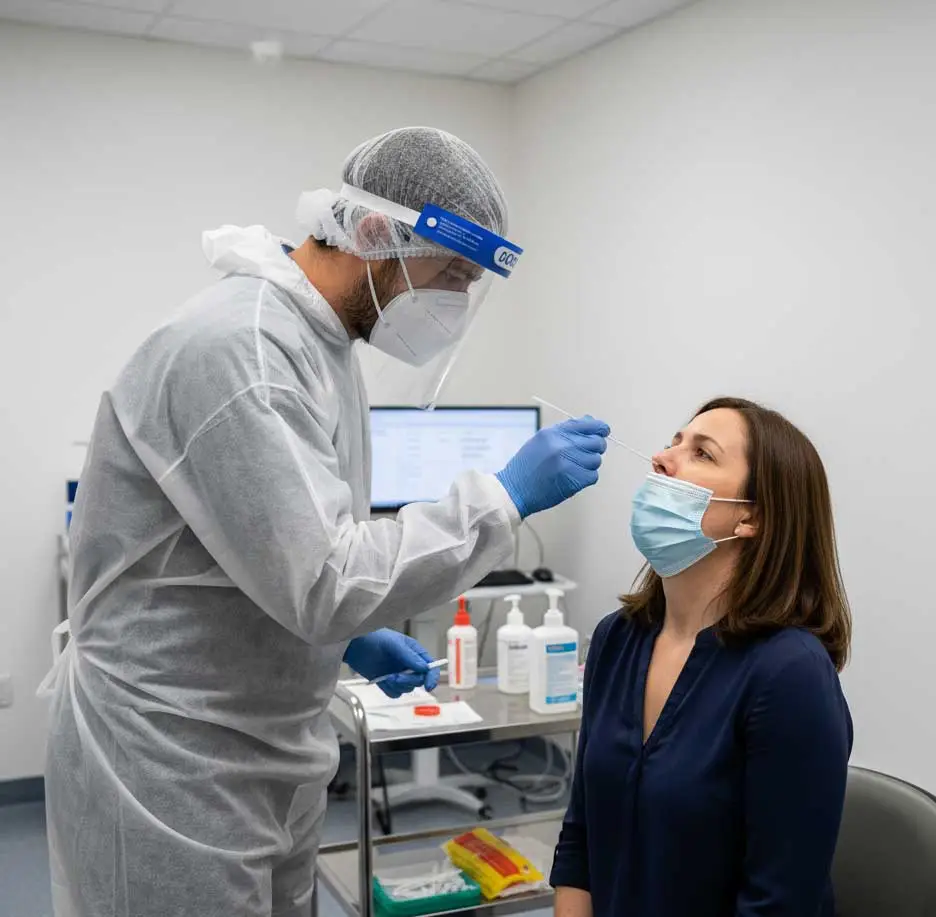In recent years, the word “quarantine” has profoundly changed in meaning. After the period of restrictions linked to the Covid-19 pandemic, today – in 2025 – Italy has adopted new quarantine rules based on individual responsibility and clinical evaluation of symptoms.
In Milan, one of the country’s most densely populated and dynamic cities, the management of Covid positivity follows national guidelines, with flexible recommendations designed to ensure both safety and continuity of daily life.
According to the Italian Ministry of Health and the National Institute of Health (Istituto Superiore di Sanità), the core principle is clear: manage positivity consciously, without alarmism but with respect for collective health.
In this article, you’ll find out how long quarantine lasts today, when isolation is necessary, the current rules for close contacts, how returning to school or work in Milan is handled, and what the 2025 Covid regulations in Italy and Lombardy entail.
If you’d like to receive personalized information, contact us for assistance and up-to-date guidance.

What changes in 2025 compared to the past
The new quarantine rules 2025 introduce a more balanced approach compared to the years of the health emergency.
Here are the key principles that guide the management of Covid positivity cases in Italy today:
| Aspect | 2025 Rules | Differences from the past |
|---|---|---|
| Isolation | Recommended only in case of symptoms or a positive test | No longer mandatory for everyone |
| Average duration | 3–5 days | Reduced compared to the previous 10–14 days |
| Return to social life | Allowed after 48 hours without symptoms | No exit test required |
| Close contacts | No isolation, only symptom monitoring and FFP2 mask | Previously mandatory |
| Over 65 and vulnerable people | Greater precautions and medical monitoring | Increased attention |
When isolation is required in case of Covid according to the new quarantine rules
The new quarantine rules no longer require automatic isolation for every positive test.
These guidelines apply throughout Italy, including major cities like Milan, where high population density demands particular attention.
Positive test with symptoms
If you develop fever, cough, muscle pain, or other respiratory symptoms, it is recommended to isolate for at least 5 days, until you have been symptom-free for at least 48 hours.
Positive test without symptoms
If you test positive but have no symptoms, a precautionary period of 3–5 days is sufficient. During this time, avoid close contact with others and wear an FFP2 mask in enclosed or crowded places.
How long does quarantine last today
In 2025, the duration of quarantine is no longer fixed but varies depending on a person’s health condition and the presence of symptoms.
The new quarantine rules establish that:
- On average, quarantine lasts 3–5 days;
- Returning to normal activities is allowed after at least 48 hours without symptoms;
- A negative test is no longer required to end isolation, except for those returning to healthcare or school settings;
- In mild or asymptomatic cases, resuming activities after a few days is acceptable, while vulnerable or chronically ill individuals are advised to wait for full recovery.
In Milan, where many people work in offices or use public transportation, it is especially important to wear a mask during the first few days after recovery to prevent transmission in enclosed spaces.
Close contacts: what to do today
Anyone who has been in contact with a positive case no longer needs to isolate automatically.
The current guidelines recommend:
- Monitoring symptoms for 5 days;
- Wearing an FFP2 mask in enclosed or crowded places;
- Taking a test only if symptoms appear.
This approach is based on personal responsibility and active self-monitoring of one’s health.
Quarantine and return to daily life
Returning to school or work is allowed once you have been asymptomatic for at least 48 hours, with no requirement for a control test.
However, many companies, schools, and public offices still apply internal protocols with additional measures, such as temporary remote work, mask use, and workspace sanitization.
Children, students, and school
For younger children and students, the new quarantine rules are even simpler:
- They stay home only while they have symptoms;
- They can return to school after 24 hours without fever and once they feel well;
- Medical certificates are no longer required for returning to class.
Over 65 and vulnerable individuals
In Milan and throughout Lombardy, where the elderly population is significant, attention to vulnerable people remains a priority:
- Stay in a separate room during the days of positivity;
- Wear a mask even at home;
- Avoid direct contact until symptoms have disappeared;
- Consult a doctor to assess the possibility of early antiviral treatment in high-risk cases.

Travel and movement according to the new quarantine rules
In Italy, there are no longer any travel restrictions after quarantine, as long as no clear symptoms persist.
However, some foreign countries still maintain health checks or require specific documentation, so it is always advisable to check local regulations before departure (see Viaggiare Sicuri – Ministry of Foreign Affairs).
In case of persistent symptoms
If cough, fatigue, or general discomfort persist after a few days, it is advisable to consult your general practitioner or a healthcare center in Milan.
These symptoms may be related to Long Covid or a post-viral response that deserves proper medical attention.
Conclusion
The new quarantine rules 2025 mark the end of the era of widespread restrictions.
Today, the key word is balance — protecting public health while maintaining personal freedom and care for the most vulnerable.
Being informed and acting responsibly allows people to live peacefully and safely with the virus, contributing to collective well-being.
Official sources:
- Italian Ministry of Health – Covid-19: information and updates
- National Institute of Health (Istituto Superiore di Sanità) – Covid-19 in Italy today
- European Centre for Disease Prevention and Control (ECDC)
FAQ – New Quarantine Rules 2025
Usually 3 to 5 days, until you’ve been symptom-free for at least 48 hours. No exit test is required.
No. They only need to monitor symptoms for 5 days and wear an FFP2 mask in indoor settings.
No, but it is recommended in healthcare or school environments if symptoms persist.
It’s not mandatory, but recommended for 2–3 days afterward in crowded places.
Contact your doctor for an evaluation and further medical checks if needed.
No. They can go back once they’ve been fever-free for at least 24 hours and feel well.
Yes. They should minimize contact and consult their doctor for possible antiviral treatments.
Yes, travel within Italy is allowed. For international trips, always check the destination country’s rules.
If you test positive for Covid in 2025, isolation is no longer mandatory, but recommended based on symptoms.
– If you have fever, cough, or general malaise, stay home for about 5 days or until you’ve been symptom-free for at least 48 hours.
– If you’re asymptomatic, 3–5 days of caution are enough — avoid close contact and wear an FFP2 mask.
A negative test is not required to end isolation, except in healthcare or school environments.
In 2025, isolation is not mandatory, only recommended if you show symptoms such as fever or cough.
If you are positive but asymptomatic, you should avoid close contact and wear an FFP2 mask in indoor or crowded places.
The goal is to protect vulnerable people while maintaining normal daily activities.
For people who test positive but have no symptoms, the new quarantine rules 2025 state:
– No mandatory isolation, only 3–5 days of caution;
– FFP2 mask in enclosed or crowded spaces;
– No exit test, except in healthcare or school contexts.
In practice, just avoid close contact until you’ve been symptom-free for at least 48 hours.
Yes. Those living with a positive person can go out freely, since isolation is not required for close contacts.
However, it’s recommended to:
– Monitor symptoms for 5 days;
– Wear an FFP2 mask in enclosed or crowded areas;
– Take a test only if symptoms appear.
The goal is to avoid spreading the virus while maintaining normal daily life with caution.
No, not always. Contagiousness is highest in the first few days after a positive test, especially if you have symptoms like fever or cough.
Usually, after 5 days and 48 hours without symptoms, the risk of transmission drops significantly.
As a precaution, it’s advisable to wear an FFP2 mask and limit close contact during the first few days after recovery.










